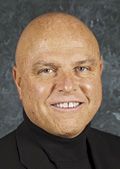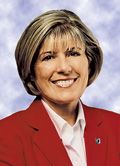Article
Insider secrets to improve value-based medicine
: In this installment of Sight Lines, Gary Brown, MD, MBA, and Melissa Brown, MD, MN, MBA, discuss their work quantifying the value of ophthalmic care as it relates to the improvement of patients’ quality of life. Their use of Quality-Adjusted Life-Years methodology allows comparison of cost-effectiveness of medical, pharmacologic, and surgical interventions within and across specialties.
Sight Lines By J.C. Noreika, MD, MBA
Editor’s Note: In this installment of Sight Lines, Gary Brown, MD, MBA, and Melissa Brown, MD, MN, MBA, discuss their work quantifying the value of ophthalmic care as it relates to the improvement of patients’ quality of life. Their use of Quality-Adjusted Life-Years methodology allows comparison of cost-effectiveness of medical, pharmacologic, and surgical interventions within and across specialties.

J.C. Noreika, MD, MBA
DR. NOREIKA: Tell our readers what led you to this mission.
MELISSA: I come from a long line of medical practitioners. My father and grandfather were physicians. While beginning my medical career in nursing as a clinical nurse specialist and nursing educator, with the support of my husband, I returned to school. I earned my medical degree at Jefferson Medical College, completing my ophthalmology training at Wills Eye Hospital. I maintained a private practice in comprehensive ophthalmology and in 1998, Gary and I founded the Center for Value-Based Medicine.
Did you see this? Patients who lost eye insist they can still 'see'
It was clear to me that health-care policy needed to change to keep up with the growing health-care expenditures but appreciated the clear need for improved quality care. The undertaking has focused on collaborate work with other physicians on developing a systematic approach that could meet both objectives in the United States. My long-time concern for maintaining quality health care for our patients and family has remained the incentive for my efforts.
GARY: After graduating from Colgate College, I attended medical school in New York. I did my ophthalmology training at Wills Eye and stayed on to complete a vitreoretinal fellowship. My early career was influenced by the mentorship of Dr. Jerry Shields who remains a colleague and good friend.
After my fellowship, I joined the faculty at Wills Eye Institute and have enjoyed the rewards of an academic career-research, writing, teaching, speaking. I’ve had a keen interest in empowering ophthalmologists and saw early on how the system favored payers over providers and patients. This led Melissa and I to our next adventure.
DR. NOREIKA: You started a health insurance company. I remember Gary speaking about it years ago to an ovation at an American Academy of Ophthalmology mid-year forum. Tell us about this.
Next: If docs want to be in charge of the system
GARY: It was obvious that if doctors were to be in charge of the system, they had to become involved on the payer side of the equation. In 1995, I decided to enlist the talents and support from some colleagues, evaluate the opportnity to, and subsequently, launch a physician’s-owned insurance company within the state of Pennsylvania.
More from Sight Lines with Dr. Noreika
There were a lot of challenges and obstacles for this undertaking. However, we raised money, put together a panel of more than a thousand doctors, and insured lives across the state. It was not sustainable over the long haul. We were undercapitalized given the industry’s increasing requirements for adequate reserves and found that the health insurance playing field wasn’t level. Health systems and hospitals provided favorable rate structures to big, deep-pocketed players and the smaller companies like ours were at a pricing disadvantage. Although not successful, we learned a lot.
DR. NOREIKA: And this led you to establish the Center for Value Based Medicine?

Melissa Brown, MD, MN, MBAMELISSA: Yes and no. Gary and I realized we needed to be more knowledgeable about business. We completed a Masters of Business Administration in the executive program at St. Joseph’s College here in Philadelphia. It was a good experience.
Our classmates were people who worked in business and industry. There was a lot of cross-pollination of shared ideas and experiences. They brought a mature perspective beyond medicine and allowed us to gain insight into how health care and its professionals are valued.
Office-based surgery coming sooner that you think
GARY: Not exactly. Sanjay Sharma, then a vitreoretinal fellow at Wills, understood the Canadian health system and was acquainted with the use of Quality-Adjusted Life-Years (QALY) methodology that the Canadian system and Britain’s National Health Service use to do cost-benefit analysis of medical interventions.
QALY also permitted an objective way to compare interventions across specialties. It is a tool that was first used in urology to gauge cost and benefit of renal dialysis. Since then, its database has expanded to cover nearly all medical and surgical interventions.
QALY is based on a scale of 0 to 1.0. Zero equates to death while 1.0 defines perfect health. There are conditions with negative numbers, conditions worse than death.
Next: How QALY affects treatments
We looked at the value of cataract surgery as it impacts the lives of thousands of patients. A very detailed questionnaire is used to measure a patient’s perception of function, work, hobbies, and independence. These responses are correlated with ophthalmic findings, such as best-corrected vision, age, density of cataract, whether it is unilateral or bilateral, and presence of other conditions, such as age-related macular degeneration. We found that cataract surgery on the first eye provided a huge increase in value for the patient’s life and an enormous return to society.
Blog: In defense of OD-performed surgeries
MELISSA: QALY also allows us to compare and contrast different treatments. For example, we found that cataract surgery on patients’ first eye led to a 20.8% improvement in their quality of life. Cataract surgery on both eyes led to an increase of more than 36%, a huge improvement.
This contrasts with the treatment of systemic hypertension with beta-blockers with improvement of around 8.0%. Today, cataract surgery’s fees have decreased 89.9% since 1985.
Gary and I found that cataract surgery on the first eye yields an extraordinary 4,567% financial return on investment to society over the 13 years that we have studied it. This return factors in gains to society, such as a return to work, independent and safer living, and allowing caretakers to pursue other productive activities. Although surgery on the second eye didn’t provide the same increase, it did provide a very positive return.

Gary Brown, MD, MBAGARY: And it draws a bright line between cost and value. We found that focal laser therapy for a subretinal neovascular membrane is effective compared with anti-VEGF therapy when only considering cost. But, when applying QALY standards to each, anti-VEGF has a much higher benefit correlation and provides greater value to the patient as well as society. Cost and value are very different things although payers don’t often differentiate the two.
DR. NOREIKA: Melissa, you’ve had some first-hand experience in the political arena. What have you learned? How has it helped?
MELISSA: I ran twice for the House of Representatives from my district in Montgomery county and Northeast Philadelphia. Although unsuccessful, it provided me an intimate understnading of the inner workings of Washington, DC.
Next: Advice for YOs
We have been able to interact with decision at the federal level. These are the people who make the rules for Medicare and Medicare that drive all health insurance.
We were honored to have Tom Scully write the foreword to our book.
In case you missed it: Ebola warning for ophthalmologists
We have shared this information with administrators and legislators. Some have said we were 10 years ahead of where Washington was.
I found the political process to be very frustrating in some ways. Elected officials are pulled in so many different directions by so many different constituencies that too often the expedient decision is made at the expense of the best decision. It’s a difficult position and tough choices have to be made.
DR. NOREIKA: What advice do you have for our younger colleagues who, ultimately, will bear the brunt of the changes to the health-care landscape?
MELISSA: Doctors are busy doing many different things professionally and in their private lives. Getting involved with politics isn’t seen as an attractive option, but a necessar one.
Physicians must get involved. Because if they don’t, it will be the academics, PhDs, and legislative assistants who will write the rules that determine everything from treatment protocols to reimbursement levels.
Next: "I am bullish on the future of ophthalmology"
Gaining the confidence of legislators and their staff is crucial and doesn’t have to consume a lot of time. We need to become their educators of health-care needs. Ophthalmologists have to get into the game.
GARY: I am bullish on the future of ophthalmology, because our society is so dependent on images and visuals.
The need for our services will only grow as the baby boomers reach older age. The benefit that ophthalmology provides for them and society as a whole is enormous. But it won’t be rewarded unless we educate those who determine our compensation and formulate regulations to ophthalmology’s value.
More about Drs. Gary and Melissa Brown
One constant in the chaotic evolution of America’s health-care delivery system is its mandate to demonstrate the value of medical intervention. Encompassing cost and benefit, the concept of value is highly subjective. But it affords a model to quantify the quality of care. Utilizing but distinct from Big Data, it is most informative when correlating the patient’s perception of quality of life with a therapy’s cost.
Gary Brown, MD, MBA, and Melissa Brown, MD, MN, MBA, have been at the forefront of this movement for almost two decades. Their articles have been published in ophthalmology’s most prestigious journals including Ophthalmology, the British Journal of Ophthalmology, and the Transactions of the American Ophthalmological Society. Along with co-author Sanjay Sharma, MD, their book “Evidence-Based to Value-Based Medicine” was published by the AMA Press in 2005 and is referenced by health-care decision and policy-makers worldwide. Thomas Scully, head of the Centers for Medicare and Medicaid Services under President George W. Bush, wrote its foreword.
Leveraging their careers in private practice and academia, they witnessed the unrelenting socio-economic changes affecting both.. With a strong interest in the changing needs of health care, in 1998, they co-founded the Center for Value Based Medicine. Melissa serves as the president and chief executive officer while Gary is chief medical officer. Gary, professor of ophthalmology and director emeritus of the Wills Eye Hospital's Retina Service, has published widely and has been recognized and honored by the specialty’s organizations. He continues to practice full time at Mid Atlantic Retina and Wills Eye Hospital.
His partner and spouse, Melissa, professor of ophthalmology at Thomas Jefferson University, has retired from a private practice in comprehensive ophthalmology in Flourtown and at Wills Eye, now invests her time and energy in the work of the center. She has been a two-time nominee for U.S. Congress (PA13) and is pleased to be able to contribute to the ongong health-care reform process, both polliticall and through active research, teaching, and consulting.
-J.C. Noreika, MD, MBA
Newsletter
Don’t miss out—get Ophthalmology Times updates on the latest clinical advancements and expert interviews, straight to your inbox.




